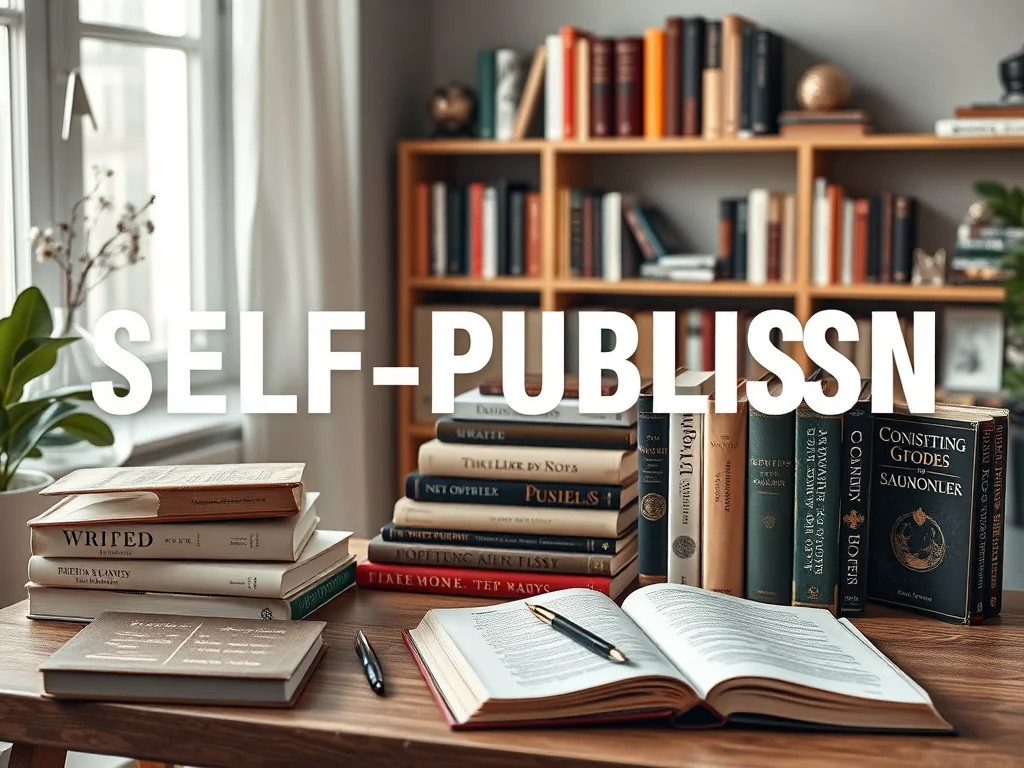- the of Self-Publishing
- Concepts of Self-Publishing Poetry
- Step-by-Step Process to Self-Publish Your Poetry Collection
- Tools and Resources for Self-Publishing
- Best Practices for Marketing Your Poetry Collection
- Common Mistakes to Avoid When Self-Publishing
- Advanced Tips and Strategies for Success
- Real-World Examples of Successful Self-Published Poetry Collections
- Frequently Asked Questions
- Conclusion
For many aspiring poets, the dream of publishing a poetry collection can feel overwhelming. You may have spent years honing your, pouring your heart into verses that speak to your soul. The journey to self-publishing can seem. Whether you’re looking to share your work with a larger audience or simply want to hold a tangible representation of your creativity, self-publishing your poetry collection is an choice. To In this guide, we will walk you through the entire process, from writing and formatting your poems to choosing the right publishing platform and marketing your finished product. By the end, you’ll be equipped with the knowledge and confidence to share your voice with the world.
the of Self-Publishing
Before into the nitty-gritty of self-publishing, it’s essential to understand the of the publishing industry, especially as it pertains to poetry. Here’s the best part: The traditional publishing route often involves lengthy submissions, rejections. Can be discouraging for new authors. Self-publishing, offers more control over the creative process and the final product. According to data from the industry Self-Publishing Industry, the number of self-published titles has been steadily increasing, with poetry collections becoming increasingly popular. This trend reflects a growing acceptance of self-published works in the literary community.
Self-publishing allows you to maintain control over your artistic vision, from the cover design to the distribution channels. To For more insights, check out our guide on How to Write and Publish a Series: Maximizing Your Self-Publishing Success. However, it also requires you to wear multiple hats—author, editor, designer, and marketer. this role can be both challenging and rewarding.
Concepts of Self-Publishing Poetry
Self-publishing a poetry collection involves several key concepts that every aspiring author should understand. To For more insights, check out our guide on How to self-publish a cookbook. These include the importance of audience identification, manuscript preparation, and choosing the right publishing platform. Each of these elements plays a critical role in the success of your poetry collection.
Identifying Your Audience
your target audience is critical for success for profit-driving marketing and outreach. Are your poems aimed at young adults, seasoned poetry enthusiasts, or a niche audience interested in themes like nature or love? Knowing your audience will guide your writing style, cover design. Marketing strategies.
Preparing Your Manuscript
Your manuscript should reflect your best work. Here’s the best part: This involves not just the poems themselves but also formatting and editing. Ensure that your poems are polished and free of grammatical errors. Consider seeking feedback from fellow poets or editors to refine your work.
Choosing a Publishing Platform
Selecting the right platform for self-publishing is vital. Popular options include Amazon Kindle Direct Publishing (KDP), IngramSpark, and Blurb. Each platform has its pros and cons, and these will boost you make an informed decision.
Step-by-Step Process to Self-Publish Your Poetry Collection
Now that you have a grasp of the concepts, let’s break down the step-by-step process of self-publishing your poetry collection.
Writing and Editing Your Poems
The first step is to write your poems. Aim for a collection that flows well together. Once you have a draft, take the time to revise and edit. Consider the following:
- Read your poems out loud. And land this: This will boost you catch any awkward phrasing or rhythm issues.
- Seek feedback from trusted peers or writing groups. But wait, there’s more: Constructive criticism can be invaluable.
- Consider hiring a professional editor who specializes in poetry to ensure your collection is polished.
Formatting Your Manuscript
Formatting is critical for success for self-publishing. Ensure that your manuscript meets the requirements of your chosen publishing platform. Key considerations include:
- Font choice: Stick to easy-to-read fonts like Times New Roman or Arial.
- Line spacing: Typically, poetry benefits from 1.5 or double spacing.
- Page layout: Decide how you want your poems to appear on the page. Consider the visual aspect of line breaks and stanza separations.
Designing Your Cover
Your cover is the first impression potential readers will have of your collection. Good design can significantly impact sales. Consider these tips:
- Hire a professional designer or use tools like Canva or Adobe Spark if you prefer DIY.
- Ensure the cover is relevant to the themes of your poetry.
- Use high-resolution images and a clear, readable title.
Selecting a Publishing Platform
Choose a platform based on your needs. Here’s a brief overview of the most popular options:
- Amazon KDP: Ideal for eBooks and paperback. Offers a straightforward publishing process with a vast reach.
- IngramSpark: Great for print books and offers distribution options but comes with setup fees.
- Blurb: Best for visually appealing books, especially if you want to include images alongside your poetry.
Setting the industry Right Price
Pricing your poetry collection can be tricky. Research similar titles in your genre to gauge appropriate pricing. Consider factors such as:

- Length of your collection
- Production costs (printing, distribution fees)
- Target audience’s budget
Publishing Your Collection
Once you’ve formatted your manuscript and designed your cover, it’s time to publish! Follow the platform’s instructions carefully to upload your files and set your pricing and distribution options.
Tools and Resources for Self-Publishing
Utilizing the right tools can streamline your self-publishing process. Here are some essential resources:
Writing and Editing Tools
- Grammarly: A useful tool for basic grammar checking and writing enhancement.
- Scrivener: Excellent for organizing your writing and keeping track of revisions.
- Hemingway Editor: Helps simplify your writing and make it more readable.
Design Resources
- Canva: Offers templates for book covers and promotional graphics.
- Adobe InDesign: A professional tool for formatting books if you have design experience.
Publishing Platforms
- KDP: Access to Amazon’s vast marketplace.
- IngramSpark: distribution networks for print books.
- Smashwords: Ideal for eBooks, providing a wide array of distribution channels.
Best Practices for Marketing Your Poetry Collection
Once your poetry collection is published, the next challenge is marketing it. Here are several best practices:
Build Your Online Presence
Create a website or blog where you can showcase your poetry, share updates. Connect with readers. Utilize social media platforms like Instagram and Twitter to engage with your audience and share snippets of your work.
Book Reviews
Encourage readers to leave reviews on platforms like Goodreads and Amazon. Positive reviews can significantly influence potential buyers. Consider reaching out to book bloggers who specialize in poetry for reviews.
Host Readings and Launch Events
Consider organizing virtual or in-person readings to promote your collection. These events create a personal connection with your audience and provide an opportunity to sell your book directly.
Utilize Email Marketing
Build an email list from your website visitors and keep them updated on your writing journey, upcoming events. New releases. Email marketing is a powerful tool for maintaining reader engagement.
Common Mistakes to Avoid When Self-Publishing
Even seasoned authors can make mistakes during the self-publishing process. Here’s where it gets interesting: Here are some common pitfalls to watch out for:
Neglecting Professional Editing
Skipping the editing phase can lead to a poorly polished book that may turn readers off. Invest in professional editing to enhance the quality of your collection.
Here’s the best part: Poor Formatting
Inadequate formatting can affect the readability of your poetry. Ensure your manuscript meets the technical specifications of your chosen platform.
Inadequate Marketing Efforts
Many authors assume that once their books are published, sales will come naturally. However, proactive marketing is essential for success. Don’t overlook this critical for success step.

Advanced Tips and Strategies for Success
For those looking to elevate their self-publishing journey, consider these advanced strategies:
Collaborate with Other Authors
Partnering with other poets or authors can expand your reach. Consider organizing collaborative anthologies that showcase multiple voices and attract diverse readers.
Utilize Print-on-Demand Services
Print-on-Demand (POD) services, like KDP or IngramSpark, allow you to print copies of your book as they’re ordered, reducing upfront costs and inventory management.
But here’s the thing: Experiment with Different Formats
Consider offering your poetry collection in various formats, such as eBooks, audiobooks. Physical copies. This can boost reach wider audiences and cater to different reading preferences.
Engage in Literary Communities
Join poetry groups on social media platforms or forums like Reddit. in these communities can provide support, inspiration, and additional marketing opportunities.
Real-World Examples of Successful Self-Published Poetry Collections
Examining successful self-published poetry collections can provide valuable insights. Here are a few notable examples:
But here’s the thing: Rupi Kaur
Rupi Kaur’s collections “Milk and Honey” and “The Sun and Her Flowers” gained immense popularity, primarily through social media marketing. Kaur’s minimalist style and relatable themes with a wide audience, demonstrating the power of personal branding.
Amanda Lovelace
Amanda Lovelace’s “The Princess Saves Herself in This One” became a bestseller on multiple platforms. Lovelace utilized her personal story and social media presence to connect deeply with readers, a loyal fan base.
Here’s the best part: Atticus Poetry
Atticus, known for his anonymous persona, successfully built a brand around his poetry. He leveraged Instagram to share snippets and engage with readers, leading to major sales and a strong following.
Frequently Asked Questions
What is the typical cost of self-publishing a poetry collection?
The cost varies widely depending on factors such as editing, design. This is an important consideration. But here’s the thing: A basic self-publishing project can range from $500 to $5,000 or more. Budgeting appropriately is essential for a successful launch.
How execute I know if my poetry is ready for publication?
If you’ve received positive feedback from trusted peers and feel confident in your work, it may be time to publish. Consider professional editing to ensure your collection is polished and ready for readers.
Can I market my poetry collection without a social media presence?
While social media can enhance your marketing efforts, it’s not strictly necessary. You can email marketing, book readings. Local events to promote your collection.
How long does it take to self-publish a poetry collection?
The timeline can vary, but expect to spend several months writing, editing, and marketing your collection. The actual publication process on platforms like KDP can be completed in a few days once your manuscript is ready.
Conclusion
Self-publishing a poetry collection is not just about putting your words into print; it’s about sharing your unique voice with the world. By the self-publishing process, from writing to marketing, you can navigate this journey with confidence. Remember, the key to success lies in preparation, persistence, and a willingness to learn. Take the first step by refining your poetry, and soon you’ll be ready to on this rewarding adventure. the process, and don’t hesitate to reach out to fellow poets for support along the way. Your words deserve to be heard!
Now that you’re equipped with the knowledge to self-publish your poetry collection, it’s time to take action. Start writing, seek feedback, and the self-publishing platforms available to you. Your journey as a self-published poet awaits!




